小升初语法提升-动词的运用 通用版 课件(共41张PPT)
文档属性
| 名称 | 小升初语法提升-动词的运用 通用版 课件(共41张PPT) | 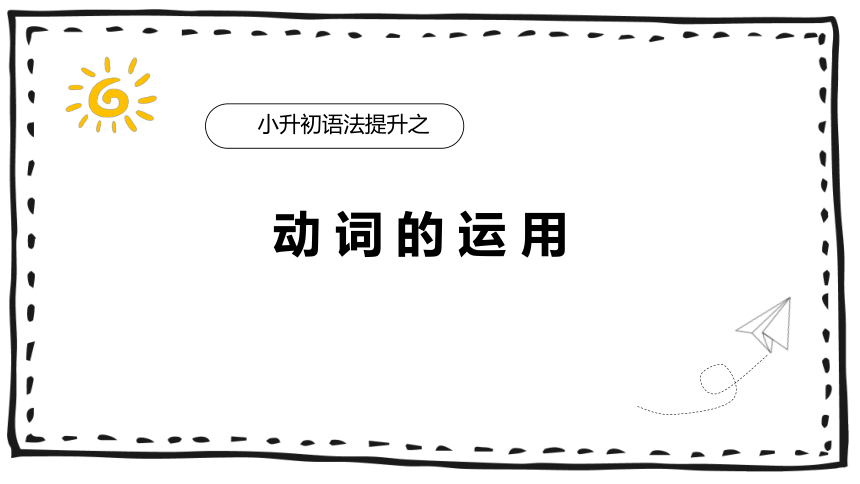 | |
| 格式 | pptx | ||
| 文件大小 | 17.8MB | ||
| 资源类型 | 教案 | ||
| 版本资源 | 人教(新起点) | ||
| 科目 | 英语 | ||
| 更新时间 | 2023-07-11 15:09:56 | ||
图片预览

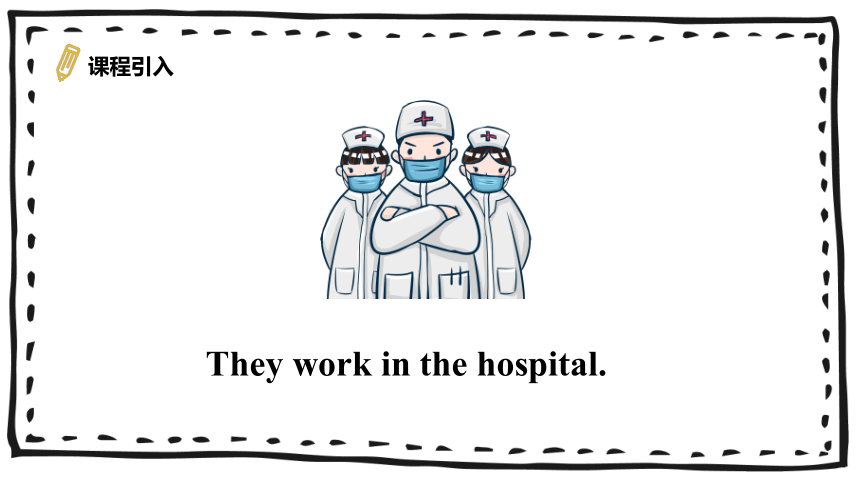
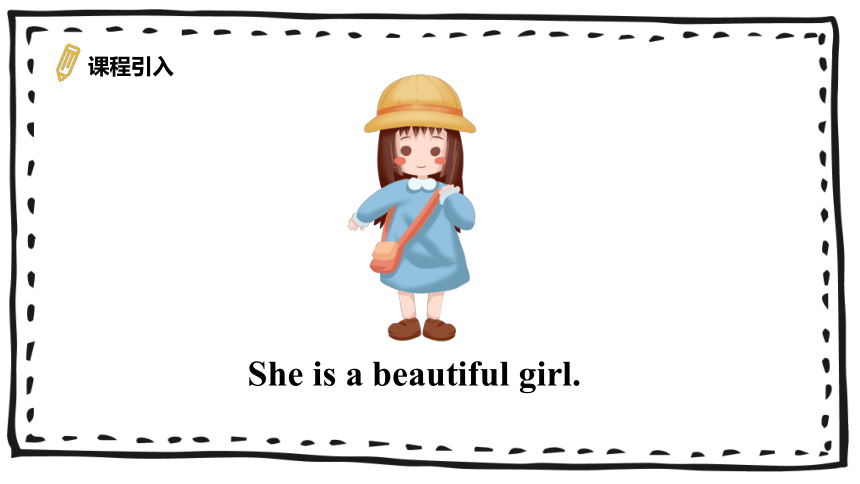
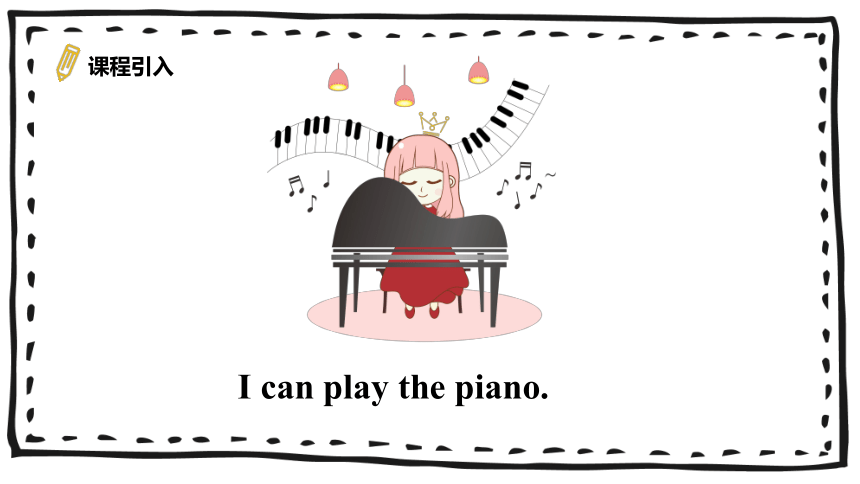
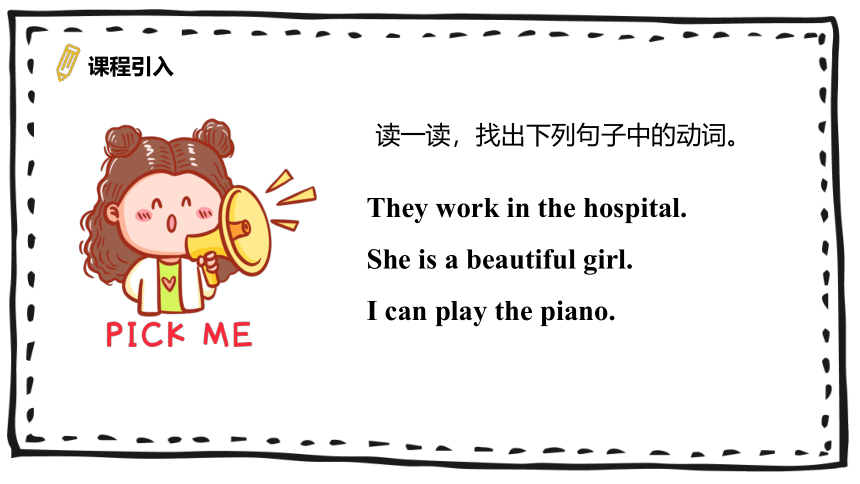
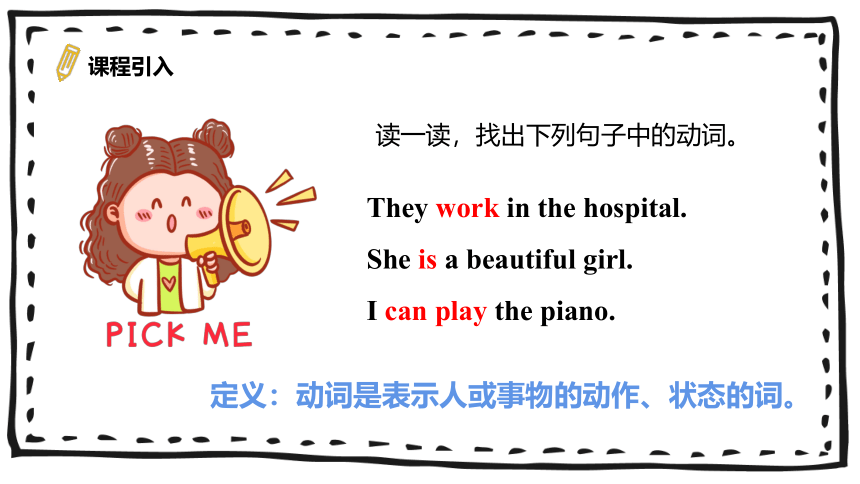
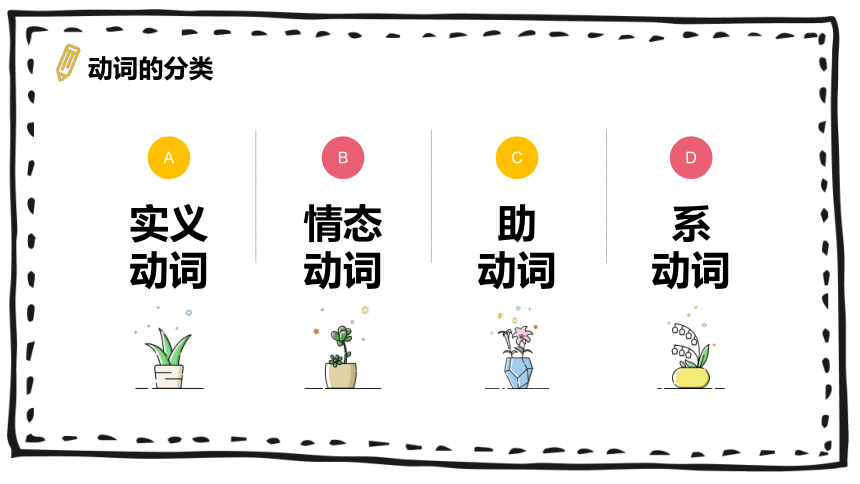
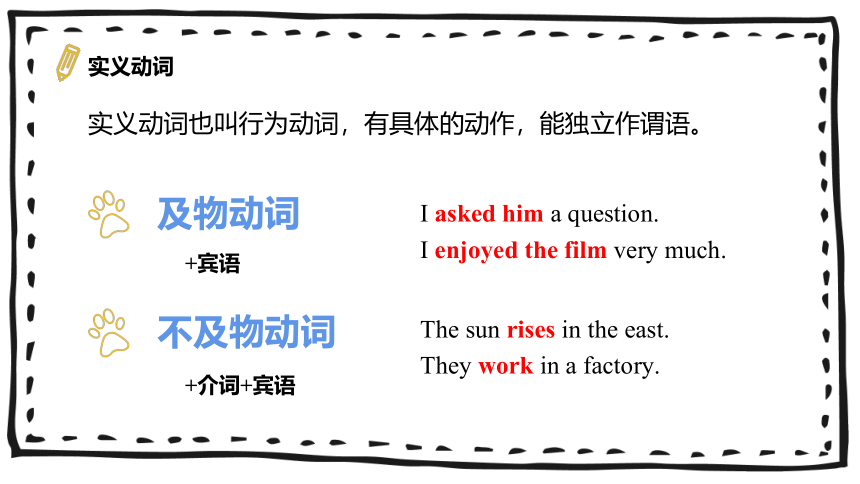
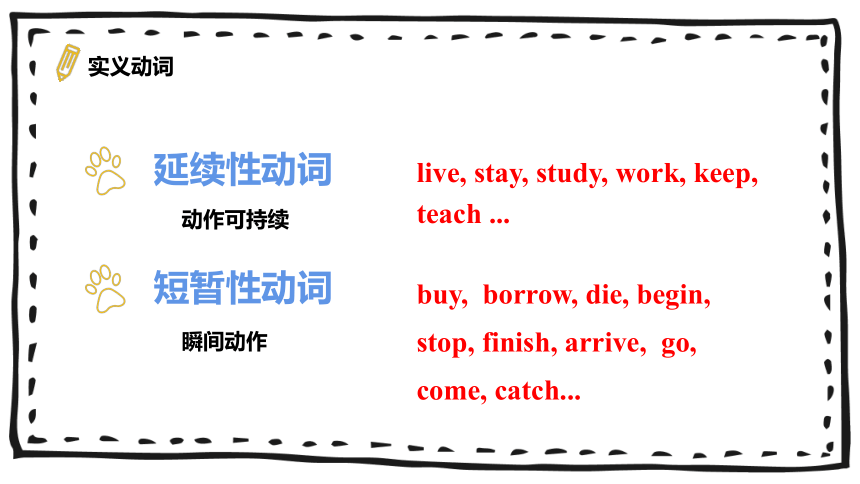
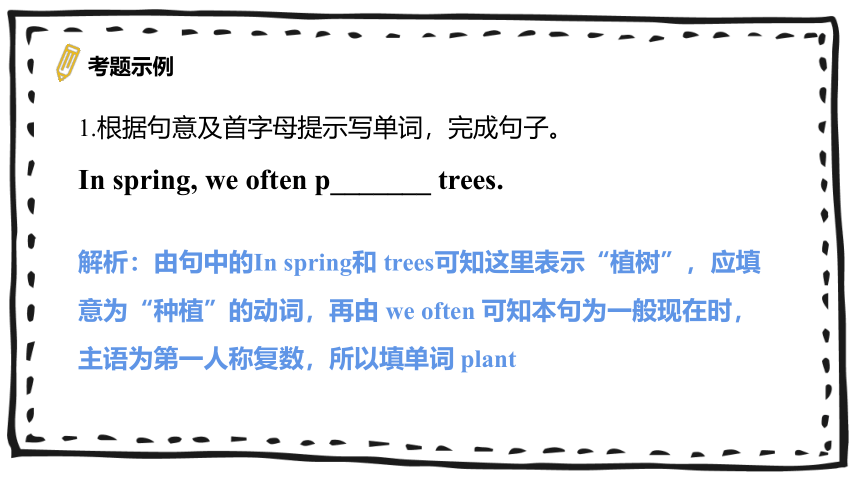
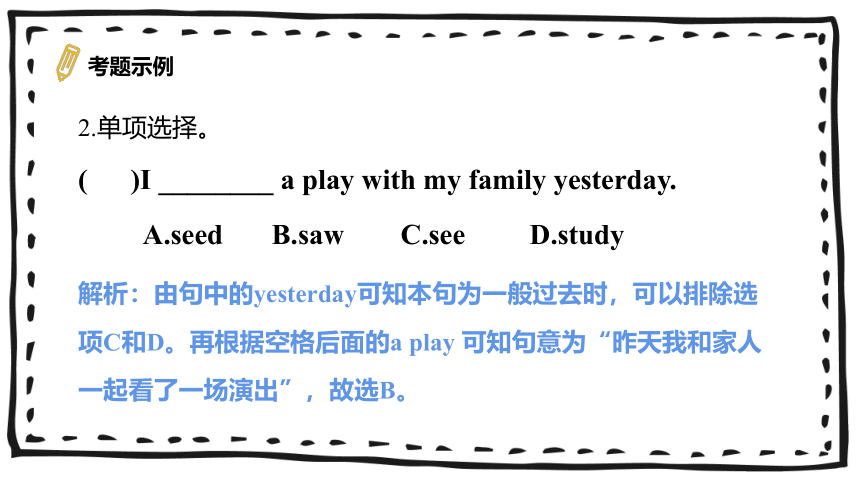
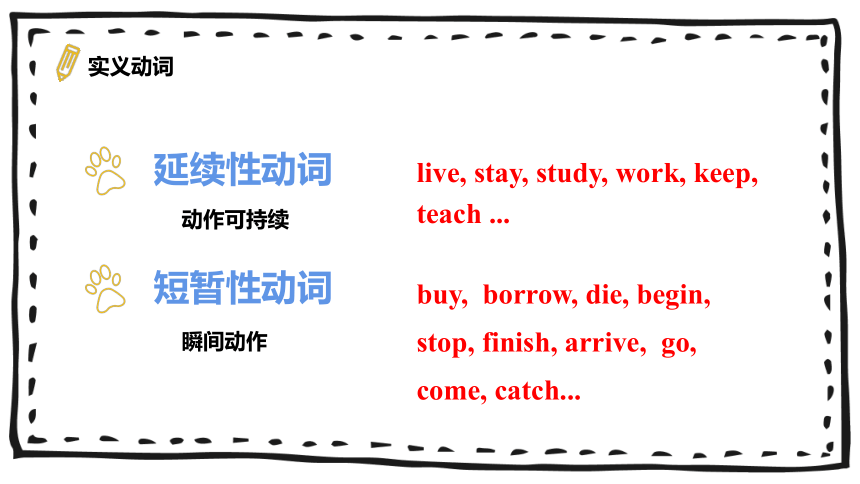
文档简介
(共41张PPT)
动 词 的 运 用
小升初语法提升之
课程引入
They work in the hospital.
课程引入
She is a beautiful girl.
课程引入
I can play the piano.
课程引入
读一读,找出下列句子中的动词。
They work in the hospital.
She is a beautiful girl.
I can play the piano.
课程引入
读一读,找出下列句子中的动词。
They work in the hospital.
She is a beautiful girl.
I can play the piano.
定义:动词是表示人或事物的动作、状态的词。
动词的分类
A
实义
动词
B
情态
动词
C
助
动词
D
系
动词
实义动词
实义动词也叫行为动词,有具体的动作,能独立作谓语。
及物动词
不及物动词
I asked him a question.
I enjoyed the film very much.
+宾语
The sun rises in the east.
They work in a factory.
+介词+宾语
实义动词
延续性动词
短暂性动词
live, stay, study, work, keep, teach ...
动作可持续
buy, borrow, die, begin, stop, finish, arrive, go, come, catch...
瞬间动作
考题示例
1.根据句意及首字母提示写单词,完成句子。
In spring, we often p_______ trees.
解析:由句中的In spring和 trees可知这里表示“植树”,应填意为“种植”的动词,再由 we often 可知本句为一般现在时,主语为第一人称复数,所以填单词 plant
考题示例
2.单项选择。
( )I ________ a play with my family yesterday.
A.seed B.saw C.see D.study
解析:由句中的yesterday可知本句为一般过去时,可以排除选项C和D。再根据空格后面的a play 可知句意为“昨天我和家人一起看了一场演出”,故选B。
实义动词
延续性动词
短暂性动词
live, stay, study, work, keep, teach ...
动作可持续
buy, borrow, die, begin, stop, finish, arrive, go, come, catch...
瞬间动作
小练习
一、用所给单词的适当形式填空。
1.I____________(read) a new book yesterday.
2.Sam____________(bring) some water quickly and poured it into the hole.
read
brought
小练习
二、单项选择。
( )1.(武汉)I hope my dream can______.
A.come true B.came true C.to come true
( )2.(南京)There is a lot of_______in Yangzhou in summer. It always______heavily.
A.rain;rains B.rainy;rains C.rain;rain
( )3.(福州)--Will you go for a holiday in October
—Yes. We______Big Ben.
A. visit B.visited C.will visit
A
A
C
情态动词
情态动词表示说话人对某事的态度。有一定词义,但不能单独做谓语,后加动词原形。不受主语人称和数影响 。
情态动词 用法 否定式
can(过去式could) 能;可能;可以,表示能力、许可、请求。 cannot=can't
may 可以;可能;祝愿,表示同意、许可或请求对方许可,祝愿。 may not
must 必须;一定;应该,表示必须、必要、推测。 must not=mustn't
need 需要,常用于疑问和否定句中,肯定句用must/have to/should代替 need not=needn't
情态动词
分类:
只作情态动词的:can(could); must; may(might)
既作情态动词又作实义动词的:need 既作情态动词又作助动词的:
既作情态动词又作助动词的:will(would); shall(should)
具有情态动词的某些特征的:have to; had better
情态动词
Must I clean the bedroom
Yes, you must.
No, you needn't ./No, you don't have to.
must 的否定回答; No,主语+needn't
No,主语+don't have to
情态动词
May/Can I smoke here
No, you mustn't.
对于绝对不能做的事情,回答语气更加强烈,要用mustn't。
情态动词
will(would); shall(should)
表示建议或意愿
Shall I get you some tea 我给你点茶好吗
will you close the window
I will do anything thing for you.
should: 应该
情态动词
have to 必须,不得不。表示客观上必须要的做的事情.
must 必须,表示主观上必须做的事情。
I must study hard.
I have to go to school.
had better 最好 后加动词原形
had better do sth
助动词
助动词本身没有意义,不能单独作谓语。
必须和其他动词连用,帮助其他动词构成时态、语态、否定句和疑问句等。
1.be (am/is/are was/were been being);
2.have (has/had)
3.do (does/did);
4.will(would) & shall(should)。
助动词
be动词
① be +现在分词,构成进行时态
He is reading a book.
② be + 过去分词,构成被动语态
The door was opened by him.
助动词
have(has/had)
①have/has +过去分词 构成现在完成时
②had +过去分词 构成过去完成时
助动词
do(does/did)
①构成否定句 I didn't go home yesterday.
②构成一般疑问句和特殊疑问句
Do you like coffee
Where does she come from?
③构成否定祈使句 Don't talk!
助动词
will/shall
用来构成将来时
will 主语为任何人称
shall主语为第一人称
考题示例
1.单项选择。
( )—Must I do my homework now
—No, you_______. You must have a rest.
A.mustn't B.needn't C.can't D.wouldn't
解析:在回答must引出的问句时,如果是否定的,不能用mustn't,mustn't意为“千万不要;禁止”,而用needn't,needn't意为“不必”。
考题示例
2.用适当的助动词填空。
—What_______you do yesterday
—I wrote to my friend.
解析:本题中需用助动词do的适当形式帮助构成疑问句,由时间词yesterday可知动作发生在过去,所以要用do的过去式did。
小练习
一、用情态动词或助动词的适当形式填空。
1.(广州)She is blind. She _______ see.
2.(武汉)—What _______ you often do on Sunday
—I often play basketball.
3.(嘉兴)— _______ you clean your room yesterday
— Yes, I _______.
can't
do
Did
did
小练习
二、单项选择。
( )1.You_____ drink more water.
A.could B.would C.should
( )2.—_____ I water the trees on Tuesday —No, you needn't
A.Can B.Must C.May
( )3. —_____ you like a glass of milk —Yes, please.
A.May B.Could C.Would
( )4.—_____ Fred like football — Yes, he ____.
A.Does;does B.Do;does C.Does;do
系动词
系动词(可做实义动词)。有词义, 但是不能单独作谓语, 必须和表语一起构成主系表结构。
分类:状态系动词
持续系动词
感官系动词
变化系动词
系动词
状态系动词:be (am ,is ,are)动词
含义:--是什么,--怎么样,--在哪里
持续系动词:keep; stay
感官系动词:某物使人产生的感觉。
look 看起来 sound 听起来 smell 闻起来 taste 尝起来 feel 感觉起来
变化系动词:表示主语变成什么样。
become, grow, turn, fall, get, go, come, run...
考题示例
1.用be动词的适当形式填空。
Mike and Liu Tao __________ at school.
解析:根据be动词的用法,本题中的主语是Mike and Liu Tao,是复数,故用are。
考题示例
2.单项选择。
( ) —I'm Lucy. Are you Alice —________
A.Yes,I am. B.No,I am.
C.Yes,you are. D.Yes,I'm.
解析:由问句“Are you Alice ”可知,肯定答语为“Yes,I am.”,否定答语为“No,I'm not.”。 故选A。
小练习
一、用be动词的适当形式填空。
1.—How old ______ you —I ______ ten years old.
2.—Where ______ your mother —She ______ at home.
3.Whose socks ______ they
4.(郑州)There ______ no gym in my school ten years ago.
5.(郑州)My favourite colour ______ blue.
are
am
is
is
are
is
is
小练习
二、单项选择。
( )1.There _____ two boys running on the street.
A.am B.is C.are
( )2.There _____ a pen and two pencils in the box.
A.are B.is C.has
( )3.Look!Sam _____ TV happily on the sofa.
A.is watching B.watches C.watch
( )4.This car _____ made in Shanghai.
A.is B.are C.has
C
B
A
A
过去式和
过去分词
played
动词原形
play
现在分词
playing
第三人称
单数形式
plays
动词的基本形式
第三人称单数形式
直接+s
以s/x/sh/ch/o结尾+es
以辅音+y结尾y变ies
特殊:have-has
过去式和过去分词
直接+ed
以e结尾+d
以辅音+y结尾,y变ied
辅元辅结构,双写+ed
特殊变化特殊记
现在分词
直
去
双
改
直接+ing
去不发音的e+ing
双写尾巴+ing(辅元辅)
改ie为y+ing
小练习
按要求写单词
1. swim (现在分词) __________
2. eat (过去式) __________
3. like (单三) __________
4. walk (过去式) __________
5. has (原形) __________
swimming
ate
likes
walked
have
Thank you
动 词 的 运 用
小升初语法提升之
课程引入
They work in the hospital.
课程引入
She is a beautiful girl.
课程引入
I can play the piano.
课程引入
读一读,找出下列句子中的动词。
They work in the hospital.
She is a beautiful girl.
I can play the piano.
课程引入
读一读,找出下列句子中的动词。
They work in the hospital.
She is a beautiful girl.
I can play the piano.
定义:动词是表示人或事物的动作、状态的词。
动词的分类
A
实义
动词
B
情态
动词
C
助
动词
D
系
动词
实义动词
实义动词也叫行为动词,有具体的动作,能独立作谓语。
及物动词
不及物动词
I asked him a question.
I enjoyed the film very much.
+宾语
The sun rises in the east.
They work in a factory.
+介词+宾语
实义动词
延续性动词
短暂性动词
live, stay, study, work, keep, teach ...
动作可持续
buy, borrow, die, begin, stop, finish, arrive, go, come, catch...
瞬间动作
考题示例
1.根据句意及首字母提示写单词,完成句子。
In spring, we often p_______ trees.
解析:由句中的In spring和 trees可知这里表示“植树”,应填意为“种植”的动词,再由 we often 可知本句为一般现在时,主语为第一人称复数,所以填单词 plant
考题示例
2.单项选择。
( )I ________ a play with my family yesterday.
A.seed B.saw C.see D.study
解析:由句中的yesterday可知本句为一般过去时,可以排除选项C和D。再根据空格后面的a play 可知句意为“昨天我和家人一起看了一场演出”,故选B。
实义动词
延续性动词
短暂性动词
live, stay, study, work, keep, teach ...
动作可持续
buy, borrow, die, begin, stop, finish, arrive, go, come, catch...
瞬间动作
小练习
一、用所给单词的适当形式填空。
1.I____________(read) a new book yesterday.
2.Sam____________(bring) some water quickly and poured it into the hole.
read
brought
小练习
二、单项选择。
( )1.(武汉)I hope my dream can______.
A.come true B.came true C.to come true
( )2.(南京)There is a lot of_______in Yangzhou in summer. It always______heavily.
A.rain;rains B.rainy;rains C.rain;rain
( )3.(福州)--Will you go for a holiday in October
—Yes. We______Big Ben.
A. visit B.visited C.will visit
A
A
C
情态动词
情态动词表示说话人对某事的态度。有一定词义,但不能单独做谓语,后加动词原形。不受主语人称和数影响 。
情态动词 用法 否定式
can(过去式could) 能;可能;可以,表示能力、许可、请求。 cannot=can't
may 可以;可能;祝愿,表示同意、许可或请求对方许可,祝愿。 may not
must 必须;一定;应该,表示必须、必要、推测。 must not=mustn't
need 需要,常用于疑问和否定句中,肯定句用must/have to/should代替 need not=needn't
情态动词
分类:
只作情态动词的:can(could); must; may(might)
既作情态动词又作实义动词的:need 既作情态动词又作助动词的:
既作情态动词又作助动词的:will(would); shall(should)
具有情态动词的某些特征的:have to; had better
情态动词
Must I clean the bedroom
Yes, you must.
No, you needn't ./No, you don't have to.
must 的否定回答; No,主语+needn't
No,主语+don't have to
情态动词
May/Can I smoke here
No, you mustn't.
对于绝对不能做的事情,回答语气更加强烈,要用mustn't。
情态动词
will(would); shall(should)
表示建议或意愿
Shall I get you some tea 我给你点茶好吗
will you close the window
I will do anything thing for you.
should: 应该
情态动词
have to 必须,不得不。表示客观上必须要的做的事情.
must 必须,表示主观上必须做的事情。
I must study hard.
I have to go to school.
had better 最好 后加动词原形
had better do sth
助动词
助动词本身没有意义,不能单独作谓语。
必须和其他动词连用,帮助其他动词构成时态、语态、否定句和疑问句等。
1.be (am/is/are was/were been being);
2.have (has/had)
3.do (does/did);
4.will(would) & shall(should)。
助动词
be动词
① be +现在分词,构成进行时态
He is reading a book.
② be + 过去分词,构成被动语态
The door was opened by him.
助动词
have(has/had)
①have/has +过去分词 构成现在完成时
②had +过去分词 构成过去完成时
助动词
do(does/did)
①构成否定句 I didn't go home yesterday.
②构成一般疑问句和特殊疑问句
Do you like coffee
Where does she come from?
③构成否定祈使句 Don't talk!
助动词
will/shall
用来构成将来时
will 主语为任何人称
shall主语为第一人称
考题示例
1.单项选择。
( )—Must I do my homework now
—No, you_______. You must have a rest.
A.mustn't B.needn't C.can't D.wouldn't
解析:在回答must引出的问句时,如果是否定的,不能用mustn't,mustn't意为“千万不要;禁止”,而用needn't,needn't意为“不必”。
考题示例
2.用适当的助动词填空。
—What_______you do yesterday
—I wrote to my friend.
解析:本题中需用助动词do的适当形式帮助构成疑问句,由时间词yesterday可知动作发生在过去,所以要用do的过去式did。
小练习
一、用情态动词或助动词的适当形式填空。
1.(广州)She is blind. She _______ see.
2.(武汉)—What _______ you often do on Sunday
—I often play basketball.
3.(嘉兴)— _______ you clean your room yesterday
— Yes, I _______.
can't
do
Did
did
小练习
二、单项选择。
( )1.You_____ drink more water.
A.could B.would C.should
( )2.—_____ I water the trees on Tuesday —No, you needn't
A.Can B.Must C.May
( )3. —_____ you like a glass of milk —Yes, please.
A.May B.Could C.Would
( )4.—_____ Fred like football — Yes, he ____.
A.Does;does B.Do;does C.Does;do
系动词
系动词(可做实义动词)。有词义, 但是不能单独作谓语, 必须和表语一起构成主系表结构。
分类:状态系动词
持续系动词
感官系动词
变化系动词
系动词
状态系动词:be (am ,is ,are)动词
含义:--是什么,--怎么样,--在哪里
持续系动词:keep; stay
感官系动词:某物使人产生的感觉。
look 看起来 sound 听起来 smell 闻起来 taste 尝起来 feel 感觉起来
变化系动词:表示主语变成什么样。
become, grow, turn, fall, get, go, come, run...
考题示例
1.用be动词的适当形式填空。
Mike and Liu Tao __________ at school.
解析:根据be动词的用法,本题中的主语是Mike and Liu Tao,是复数,故用are。
考题示例
2.单项选择。
( ) —I'm Lucy. Are you Alice —________
A.Yes,I am. B.No,I am.
C.Yes,you are. D.Yes,I'm.
解析:由问句“Are you Alice ”可知,肯定答语为“Yes,I am.”,否定答语为“No,I'm not.”。 故选A。
小练习
一、用be动词的适当形式填空。
1.—How old ______ you —I ______ ten years old.
2.—Where ______ your mother —She ______ at home.
3.Whose socks ______ they
4.(郑州)There ______ no gym in my school ten years ago.
5.(郑州)My favourite colour ______ blue.
are
am
is
is
are
is
is
小练习
二、单项选择。
( )1.There _____ two boys running on the street.
A.am B.is C.are
( )2.There _____ a pen and two pencils in the box.
A.are B.is C.has
( )3.Look!Sam _____ TV happily on the sofa.
A.is watching B.watches C.watch
( )4.This car _____ made in Shanghai.
A.is B.are C.has
C
B
A
A
过去式和
过去分词
played
动词原形
play
现在分词
playing
第三人称
单数形式
plays
动词的基本形式
第三人称单数形式
直接+s
以s/x/sh/ch/o结尾+es
以辅音+y结尾y变ies
特殊:have-has
过去式和过去分词
直接+ed
以e结尾+d
以辅音+y结尾,y变ied
辅元辅结构,双写+ed
特殊变化特殊记
现在分词
直
去
双
改
直接+ing
去不发音的e+ing
双写尾巴+ing(辅元辅)
改ie为y+ing
小练习
按要求写单词
1. swim (现在分词) __________
2. eat (过去式) __________
3. like (单三) __________
4. walk (过去式) __________
5. has (原形) __________
swimming
ate
likes
walked
have
Thank you
